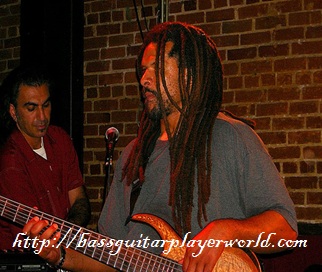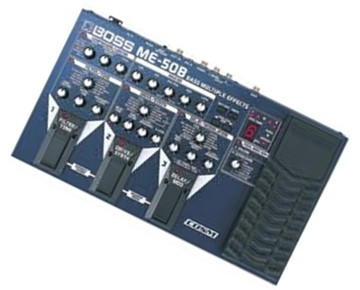How to Practice And Make the Best Use of Your Time
 So you sit down with your bass, you’re all ready for the days practice, and then you come to realize; I don’t know where to start.
So you sit down with your bass, you’re all ready for the days practice, and then you come to realize; I don’t know where to start.
If this sounds like you, then the good news is, we can help you with some tips on how to practice bass guitar.
In this lesson, we are going to give you a basic practice regimen that will help you to get the most out of your time. Instead of explaining everything in a long winded introduction, let’s just dive right in, shall we?
Phase 1: Warm Up (10 minutes)
This is the most important section of your entire bass practice session. This is the portion that will allow you to do the next session for the rest of your life without careless bass playing-related injuries.
Take your left hand in your right, and massage the palm, working your way up and down each digit. Do this for thirty seconds, and then switch hands.
Next, take your right arm and point it across your body in the opposite direction (towards the left). Then cup your left hand around your right tricep and pull it gently towards your left (the direction in which it should be pointing). Hold for thirty seconds, then arms.
Now take your right arm and point at the ceiling. Bend it downwards so that your elbow is now pointing at the ceiling instead and your hand is resting on the back of your neck. Cradle the elbow with your left hand and gently pull towards your left. Hold for fifteen seconds, then switch.
Finally, pick up your bass. Whether you play with a pick or your fingers, you will perform the same exercise; start at fret one and play your way to fret four on your lowest string. Fret one should be fretted with your forefinger, fret two with your middle finger, fret three with your ring finger, and fret four with your pinky finger.
Play this pattern on all four strings (or five or six, depending on how many you have), then move up a fret and start at fret two, playing the same pattern. Repeat the pattern, moving up a single fret each time, until you reach the twelfth fret with your index finger. Take your time; don’t rush.
Phase 2: Skill Building (30-90 minutes)
Whatever the technique you are currently working on, this is the portion of your practice regimen that is dedicated to it. If you are working on bass legatos, you will spend this portion working on your legato.
If you are working on fingering patterns, the same goes for them; this is your section of repetitive practice. If the warm up is the most important section of your practice, this portion is an extremely close second. While practicing the technique, pay close attention to form.
This entire second portion should be performed along with a metronome.
Phase 3: Improvisation (Half the amount of time spend on Phase 2)
This portion of your practice is still important, but it isn’t nearly as important as Phase 2, thus don’t go rushing through Phase 2 to reach it. This is the portion where you will be putting to use all of your learned techniques. Have fun, but remember, you are still practicing; keep your aim set on accomplishing proper implementation of said bass playing techniques.
Now that you have a bass practice regimen, there are no excuses left; go pick up your guitar now!
Check Out The Perfect Learning Tool For Bassists of All Skill Levels
JamPlay offers the best online bass instructions on the Internet. With hundreds of professionally recorded lessons, Jamplay is the ideal place to learn the basics and improve your bass playing skills. With great teachers and carefully planned lesson structures, I guarantee you will be able to take your bass playing to a higher level in no time.






One Comment
Finger permutations should be part of your warm up and have stood me in good stead.
Spend a good ten minutes before you do anything else on your Bass doing these exercises and they will develop your speed, Accuracy and technique.
Do not start off at a hundred miles an hour because you will not receive the benefit that way.
Start off by doing them very slowly then gradually build up your speed for maximum effect.
Here are the permutations for each finger :
First finger :
1/2/3/4 ,1/2/4/3 ,1/3/2/4 ,1/3/4/2, 1/4/2/3 ,1/4/3/2
Second finger :
2/1/3/4, 2/1/4/3, 2/3/1/4 ,2/3/4/1 ,2/4/1/3, 2/4/3/1
Third finger :
3/1/2/4, 3/1/4/2, 3/2/1/4, 3/2/4/1, 3/4/1/2, 3/4/2/1
Fourth finger :
4/1/2/3, 4/1/3/2, 4/2/1/3, 4/2/3/1, 4/3/1/2, 4/3/2/1
I hope these will help people who are just starting out on the Bass Guitar because it can be expensive to get lessons from a professional tutor.